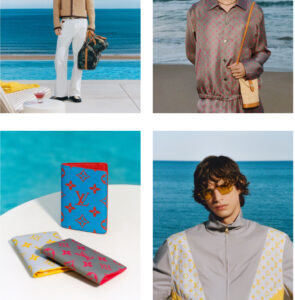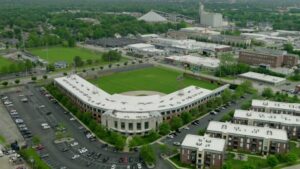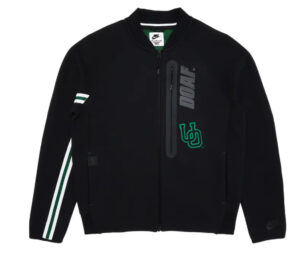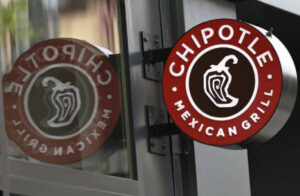In anticipation of the upcoming live-action adaptation of The Legend of Zelda, a dedicated fan has created a stunning trailer that reimagines the beloved video game series as a classic Hollywood epic. Blending the visual aesthetics of Golden Age cinema with the rich lore of The Legend of Zelda, this fan-made project has captivated audiences, offering a unique vision of how Link’s legendary adventure might have been depicted in the early days of Hollywood.
A Nostalgic Tribute to the Golden Age of Film
The trailer, titled Hyrule of Yesteryear, pays homage to the sweeping epics of the 1930s and 1940s, drawing inspiration from films like The Adventures of Robin Hood (1938), The Thief of Bagdad (1940), and King Arthur and the Knights of the Round Table (1953). Shot in vibrant Technicolor with a stirring orchestral score, the fan film transports viewers to a Hyrule envisioned through the lens of Hollywood’s most romanticized era.
From the moment the trailer begins, it is clear that the creator has meticulously studied the visual language of classic cinema. The soft-focus cinematography, grandiose matte paintings of Hyrule Castle, and practical set pieces evoke the craftsmanship of Hollywood’s golden era. Actors clad in elaborate period costumes perform with the expressive, theatrical style characteristic of pre-method acting, immersing the audience in a world that feels both nostalgic and timeless.
Casting Choices That Evoke a Bygone Era
One of the most delightful aspects of Hyrule of Yesteryear is its carefully selected dream cast. The trailer imagines legendary stars in the key roles:
- Errol Flynn as Link – With his swashbuckling charisma and effortless charm, Flynn, famous for The Adventures of Robin Hood, would have been a natural fit for the role of the silent but courageous hero.
- Olivia de Havilland as Princess Zelda – Best known for her regal and intelligent performances, de Havilland would bring an air of grace and strength to the Princess of Hyrule.
- Basil Rathbone as Ganondorf – As the quintessential Hollywood villain, Rathbone’s sinister presence and eloquent delivery would have made for a truly menacing Dark Lord.
- Claude Rains as The King of Hyrule – With his commanding yet benevolent demeanor, Rains would have embodied the noble ruler with depth and dignity.
The dialogue, delivered in the clipped yet melodious tones typical of classic Hollywood, further enhances the authenticity of the piece. The trailer seamlessly blends snippets of imagined film scenes with intertitles styled after silent-era adventure serials, reinforcing the old-world cinematic feel.
Classic Filmmaking Techniques Brought to Hyrule
What truly sets Hyrule of Yesteryear apart is its dedication to using practical effects and era-appropriate filmmaking techniques. The fan creator employed:
- Miniatures and Matte Paintings – Rather than CGI, the expansive landscapes of Hyrule are brought to life through meticulously painted backdrops and scale models, recalling the techniques used in The Wizard of Oz and Gone with the Wind.
- Swashbuckling Choreography – The action sequences feature tightly choreographed sword fights in the style of Errol Flynn’s legendary duels, emphasizing theatrical flourishes and dramatic exchanges of dialogue.
- Romanticized Lighting and Costuming – Soft golden lighting and elaborate medieval-inspired costumes evoke the fantastical nature of the Zelda universe while staying true to Golden Age aesthetics.
These choices give the fan film an air of authenticity, making it feel like a genuine relic from Hollywood’s golden past.
Fan Reception and Cultural Impact
Since its release, Hyrule of Yesteryear has gone viral among Zelda fans and cinephiles alike. Many have praised its attention to detail and creative vision, with some even suggesting that the upcoming official live-action Legend of Zeldafilm take inspiration from the classic Hollywood aesthetic. Social media has been abuzz with fans debating which vintage directors, such as Michael Curtiz (Casablanca) or Victor Fleming (The Wizard of Oz), would have been best suited to helm such a production.
This creative reimagining has also sparked discussions about the timeless nature of The Legend of Zelda. The series’ archetypal characters, mythological storytelling, and grand sense of adventure align perfectly with the kinds of stories that Hollywood’s golden era excelled at telling. The trailer proves that Zelda is not bound by modern cinematic trends—it can be envisioned through multiple artistic lenses while maintaining its core identity.
Looking Ahead: How Will the Official Zelda Movie Compare?
As excitement builds for the upcoming official live-action adaptation, fans are eager to see how Hollywood will handle the translation of Hyrule’s magic onto the big screen. Will the filmmakers opt for a gritty, Lord of the Rings-style epic, or will they embrace the timeless whimsy that has defined the franchise for decades?
While details about the official film remain scarce, projects like Hyrule of Yesteryear demonstrate the passion and creativity of Zelda’s fanbase. They also serve as a reminder that the world of Hyrule is vast and malleable, capable of fitting into various cinematic styles across different eras.
No comments yet.








